Upadacitinib
- CAS NO.:1310726-60-3
- Empirical Formula: C17H19F3N6O
- Molecular Weight: 380.37
- MDL number: MFCD30502663
- EINECS: 213-161-9
- SAFETY DATA SHEET (SDS)
- Update Date: 2025-01-07 19:25:08

What is Upadacitinib?
Absorption
Upadacitinib displays a dose-proportional pharmacokinetic profile over the therapeutic dose range. Following oral administration, the median time to reach Cmax (Tmax) ranges from 2 to 4 hours. The steady-state plasma concentrations of upadacitinib are reached within 4 days following multiple once-daily administrations, with minimal accumulation. Food intake has no clinically relevant effect on the AUC, Cmax, and Cmin of upadacitinib from the extended-release formulation.
Toxicity
There is limited clinical information on the overdose from upacitinib: in clinical trials, once-daily administration of 60 mg in extended-release formulations were well tolerated. In case of an overdose, it is recommended that the patient is monitored for signs and symptoms of adverse reactions and treated with appropriate symptomatic treatment.
The oral LD50 in rats is 14500 mg/kg.
Description
Upadacitinib (ABT-494) is a JAK1 selective inhibitor being investigated to treat rheumatoid arthritis, Crohn's disease, ulcerative colitis, atopic dermatitis, psoriatic arthritis, axial SpA Giant Cell Arteritis and Takayasu Arteritis.
Description
Upadacitinib is a JAK1 inhibitor (IC50 = 47 nM). It is selective for JAK1 over JAK3 and tyrosine kinase 2 (Tyk2; IC50s = 2,304 and 4,690 nM, respectively), as well as a panel of 83 additional kinases at 1 μM, but does inhibit JAK2, Rho-associated kinase I (ROCK1), and ROCK2 (IC50s = 120, 920, and 430 nM, respectively). Upadacitinib decreases cytokine-induced STAT phosphorylation in a variety of human cells with IC50 values ranging from 1.6 to 649 nM. It reduces M. tuberculosis-induced paw swelling and bone erosion in a rat model of arthritis when administered at doses of 1, 3, and 10 mg/kg twice per day for 17 days. Formulations containing upadacitinib have been used in the treatment of rheumatoid arthritis.
Characteristics
Class: non-receptor tyrosine kinase
Treatment: psoriatic arthritis, rheumatoid arthritis
Elimination half-life = 6–16 h
Protein binding = 52%
The Uses of Upadacitinib
Upadacitinib also known as ABT-494, is a potent and selective Janus kinase (JAK) 1 inhibitor being developed for the treatment of several autoimmune disorders, Janus kinase inhibitors for rheumatoid arthritis.
Indications
Upadacitinib is indicated for the treatment of moderately to severely active rheumatoid arthritis or active psoriatic arthritis in adult patients who have had an inadequate response or intolerance to one or more disease-modifying anti-rheumatic drugs (DMARDs), such as TNF blockers. In Europe, upadacitinib may be used as monotherapy or in combination with methotrexate for rheumatoid or psoriatic arthritis.
Upadacitinib is indicated for use in patients 12 years of age and older with refractory, moderate-to-severe atopic dermatitis whose disease is inadequately controlled with other systemic therapies or when other therapies are inadvisable.
Upadacitinib is indicated for the treatment of active ankylosing spondylitis or radiographic axial spondyloarthritis in adult patients who have an inadequate response to conventional therapy. It is also indicated to treat non-radiographic axial spondyloarthritis with objective signs of inflammation in adults who have had an inadequate response or intolerance to TNF blocker therapy.
Upadacitinib is also indicated to treat moderately to severely active ulcerative colitis in adults who have had an inadequate response or intolerance to either conventional therapy or a biologic agent, such as to one or more TNF blockers.
Upadacitinib is indicated to treat moderately to severely active Crohn’s disease in adults who have had an inadequate response or intolerance to one or more TNF blockers.
Combining upadacitinib with other JAK inhibitors, biologic DMARDs, or other potent immunosuppressive agents is not recommended.
Background
Upadacitinib is an oral Janus kinase (JAK)1-selective inhibitor and a disease-modifying antirheumatic drug (DMARD) used in the treatment of rheumatoid arthritis to slow down disease progression. Rheumatoid arthritis is a chronic autoimmune inflammatory disease affecting the peripheral joints. It is characterized by synovial inflammation and hyperplasia, autoantibody production, cartilage damage and bone destruction, leading to co-morbidities. Despite a variety of therapeutic agents available for treatment, up to 40% of the patients do not respond to current therapies, including biological therapies. The etiology of the disease is mostly unknown; however, the role of JAK as a driver of immune-mediated conditions was discovered, leading to the use of JAK as therapeutic targets for rheumatoid arthritis. To reduce dose-related toxicity (as seen with some pan-JAK inhibitors) without significantly affecting efficacy, more selective JAK1 inhibitors, upadacitinib and filgotinib, were developed.
The FDA approved upadacitinib in August 2019 and it is used for the treatment of active rheumatoid arthritis, psoriatic arthritis, atopic dermatitis, ulcerative colitis, and ankylosing spondylitis. In December 2019, it was additionally approved by the European Commission. Upadacitinib is marketed under the brand name RINVOQ for oral administration.
brand name
Upadacitinib is marketed under the brand name RINVOQ for oral administration.
Biological Activity
Upadacitinib is a potent, orally active and selective Janus kinase 1 (JAK1) inhibitor (IC50=43 nM). Upadacitinib displays approximately 74 fold selective for JAK1 over JAK2 (200 nM) in cellular assays dependent on specific, relevant cytokines. Upadacitinib can be used for several autoimmune disorders research. In vivo, Upadacitinib inhibited paw swelling and bone destruction in a rat model of arthritis.
Mechanism of action
The Janus kinases (JAKs) are a family of cytoplasmic tyrosine kinases whose function is to transduce cytokine-mediated signals via the JAK-STAT pathway. There are four JAK subtypes, each of which has overlapping receptor responsibilities. Inhibitors of this enzyme family (jakinibs) have shown efficacy in treating certain inflammatory and autoimmune diseases such as rheumatoid arthritis and Crohn's disease. However, the first generation of these drugs, tofacitinib and ruxolitinib, lacked subtype selectivity, affecting JAK1/JAK3 and JAK1/JAK2 respectively. This has led to dose-limiting side effects in this otherwise promising class of drugs. Upadacitinib is a second generation Janus kinase inhibitor that is selective for the JAK1 subtype of this enzyme over the JAK2 (74-fold), JAK3 (58-fold) and tyrosine kinase 2 subtypes.
Pharmacokinetics
Upadacitinib is a DMARD that works by inhibiting the Janus Kinases (JAKs), which are essential downstream cell signalling mediators of pro-inflammatory cytokines. It is believed that these pro-inflammatory cytokines play a role in many autoimmune inflammatory conditions, such as rheumatoid arthritis. In clinical trials, upadacitinib decreased the activity of pro-inflammatory interleukins, transiently increased the levels of lymphocytes, and insignificantly decreased the levels of immunoglobulins from the baseline.
Clinical Use
Upadacitinib is indicated for the treatment of moderate to severe active rheumatoid arthritis in adults who have responded inadequately to, or who are intolerant to one or more disease-modifying antirheumatic drugs (DMARDs). Upadacitinib may be used as monotherapy or in combination with methotrexate.
Side Effects
Common side effects are upper respiratory tract infections such as common cold and sinus infections (13.5% of patients in studies), nausea (3.5%), cough (2.2%), fever, and increased liver enzymes. Serious side effects include infections, including life-threatening ones, such as pneumonia, cellulitis, tuberculosis, as well as shingles and other herpes infections.
Synthesis

To a solution of (3S,4R)-3-ethyl-4-(3-tosyl-3H-imidazo[l,2-a]pyrrolo[2,3-e]pyrazin-8-yl)- N-(2,2,2-trifluoroethyl)pyrrolidine-l-carboxamide (10 g) in tetrahydrofurane (50 ml_), a 10% solution of sodium hydroxide in water (15 ml) was added and heated to 50??C. The reaction mixture was stirred for 5 hours and cooled to 25??C. A saturated solution of sodium chloride (100 ml_) was added to the reaction mixture and extracted with dichloromethane (100 ml). The organic phase was separated and washed with water (100 ml_). An 2.5 % aqueous solution of HCI (100 ml) was added and stirred for 30 minutes. The organic phase was removed and the resultant acid aqueous phase was extracted with dichloromethane (100 ml). The final aqueous phase was cooled down to 0/5 ??C and a 10% solution of NaOH was charged until pH 10/12. The resultant suspension was filtered and washed with water (2 x 50 ml_). The cake was drained and dried at 30/40??C under vacuum to give an almost white amorphous solid. Yield: 80%. 1 H NMR (400MHz, d-DMSO) 612.27 (s,1H), 8.58 (s,1H), 7.47-7.43 (m,2H), 7.00-6.94 (m,2H), 4.38 -4.33 (m,1H), 3.92-3.67 (m,5H), 3.33-3.25 (m,1 H), 2.59-2.54 (m,1 H), 1.14-1.08 (m,1 H), 0.86-0.78 (m, 1H), 0.65-0.62 (m, 3H).
Metabolism
Upadacitinib predominantly undergoes CYP3A4-mediated metabolism; however, upadacitinib is a nonsensitive substrate of CYP3A4. It is also metabolized by CYP2D6 to a lesser extent. In a human radio-labelled study, about 79% of the total plasma radioactivity accounted for the parent drug, and about 13% of the total plasma radioactivity accounted for the main metabolite produced from mono-oxidation, followed by glucuronidation. There are no known active metabolites of upadacitinib.
Metabolism
Upadacitinib displays a dose-proportional pharmacokinetic profile over the therapeutic dose range. Following oral administration, the median time to reach Cmax (Tmax) ranges from 2 to 4 hours. The steady-state plasma concentrations of upadacitinib are reached within 4 days following multiple once-daily administrations, with minimal accumulation. Food intake has no clinically relevant effect on the AUC, Cmax, and Cmin of upadacitinib from the extended-release formulation. Upadacitinib metabolism is mainly mediated by CYP3A4, with a potential minor contribution from CYP2D6. Administration of strong CYP3A inhibitors increases upadacitinib AUC by 75% and Cmax by 70%, while strong inducers of CYP3A reduce upadacitinib plasma exposures by approximately half[1].
References
[1] Mohamed-Eslam F. Mohamed. “Upadacitinib: Mechanism of action, clinical, and translational science.” Cts-Clinical and Translational Science 17 1 (2023).
storage
Store at -20°C
Properties of Upadacitinib
| Density | 1.56±0.1 g/cm3(Predicted) |
| storage temp. | Store at -20°C |
| solubility | DMSO:42.67(Max Conc. mg/mL);112.17(Max Conc. mM) DMSO:PBS (pH 7.2) (1:1):0.5(Max Conc. mg/mL);1.31(Max Conc. mM) DMF:30.0(Max Conc. mg/mL);78.87(Max Conc. mM) Ethanol:76.0(Max Conc. mg/mL);199.8(Max Conc. mM) |
| form | A crystalline solid |
| pka | 11.89±0.60(Predicted) |
| color | White to off-white |
| InChI | InChI=1S/C17H19F3N6O/c1-2-10-7-25(16(27)24-9-17(18,19)20)8-11(10)13-5-22-14-6-23-15-12(26(13)14)3-4-21-15/h3-6,10-11,21H,2,7-9H2,1H3,(H,24,27)/t10-,11+/m1/s1 |
Safety information for Upadacitinib
| Signal word | Warning |
| Pictogram(s) |
 Exclamation Mark Irritant GHS07 |
| GHS Hazard Statements |
H302:Acute toxicity,oral |
| Precautionary Statement Codes |
P280:Wear protective gloves/protective clothing/eye protection/face protection. P305+P351+P338:IF IN EYES: Rinse cautiously with water for several minutes. Remove contact lenses, if present and easy to do. Continuerinsing. |
Computed Descriptors for Upadacitinib
| InChIKey | WYQFJHHDOKWSHR-MNOVXSKESA-N |
| SMILES | N1(C(NCC(F)(F)F)=O)C[C@H](C2N3C4C=CNC=4N=CC3=NC=2)[C@H](CC)C1 |
Upadacitinib manufacturer
Venkatasai Life Sciences
New Products
Tert-butyl bis(2-chloroethyl)carbamate (S)-3-Aminobutanenitrile hydrochloride N-Boc-D-alaninol N-BOC-D/L-ALANINOL N-octanoyl benzotriazole 4-Hydrazinobenzoic acid 3,4-Dibenzyloxybenzaldehyde Electrolytic Iron Powder 1,1’-CARBONYLDIIMIDAZOLE R-2-BENZYLOXY PROPIONIC ACID 4-HYDROXY BENZYL ALCOHOL 1,1’-CARBONYLDI (1,2-4 TRIAZOLE) S-2-CHLORO PROPIONIC ACID (2-Hydroxyphenyl)acetonitrile 4-Bromopyrazole 5-BROMO-2CYANO PYRIDINE 5,6-Dimethoxyindanone 5-broMo-2-chloro-N-cyclopentylpyriMidin-4-aMine 3-(Hydroxymethyl)benzoate N-Boc-2-chloroethylamine 1-Bromo-2-methoxy-3-nitrobenzene N-Methyl-3-cyclopenten-1-amine 2-Bromo-3-hydroxybenzaldehyde 1H-indazole-5-carboxamideRelated products of tetrahydrofuran
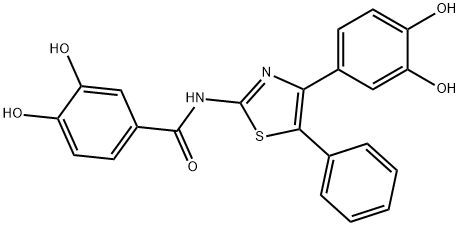
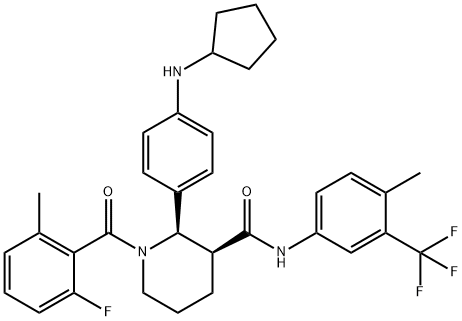
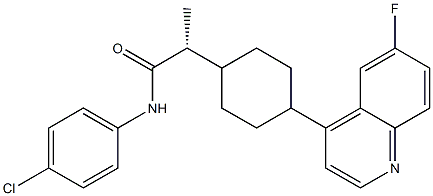
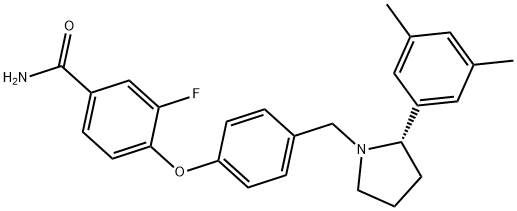

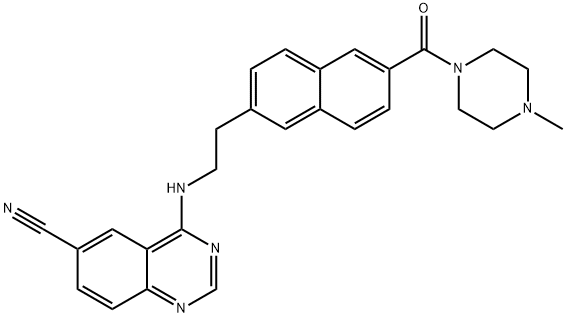
![1-((2S,5R)-5-((7H-pyrrolo[2,3-d]pyrimidin-4-yl)amino)-2-methylpiperidin-1-yl)prop-2-en-1-one](https://img.chemicalbook.in/CAS/20180702/GIF/1792180-81-4.gif)
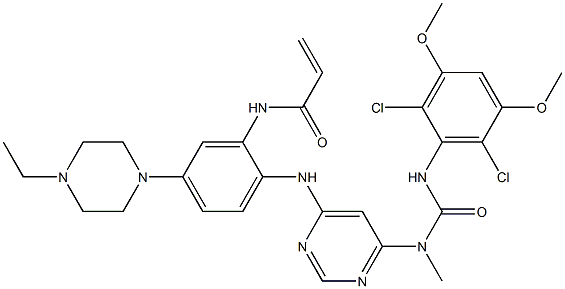
You may like
-
 1310726-60-3 Upadacitinib 99%View Details
1310726-60-3 Upadacitinib 99%View Details
1310726-60-3 -
 7441-43-2 98%View Details
7441-43-2 98%View Details
7441-43-2 -
 1260741-78-3 6-Bromo-3-iodo-1-methyl-1H-indazole 98%View Details
1260741-78-3 6-Bromo-3-iodo-1-methyl-1H-indazole 98%View Details
1260741-78-3 -
 4-bromo-3,5-dimethylbenzenesulfonyl chloride 1581266-79-6 98%View Details
4-bromo-3,5-dimethylbenzenesulfonyl chloride 1581266-79-6 98%View Details
1581266-79-6 -
 2490430-37-8 98%View Details
2490430-37-8 98%View Details
2490430-37-8 -
 N-(5-Amino-2-methylphenyl)acetamide 5434-30-0 98%View Details
N-(5-Amino-2-methylphenyl)acetamide 5434-30-0 98%View Details
5434-30-0 -
 124371-59-1 98%View Details
124371-59-1 98%View Details
124371-59-1 -
 53857-52-2 98%View Details
53857-52-2 98%View Details
53857-52-2